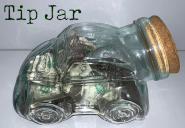

















|
|---|
|
The Story of The First Auto Race In America Publication: The New York Times Byline: Charles E. Duryea Date: 27 October 1907 Subject: Pre-WWII Racing |
Large oaks from little acorns grow. This well-known adage may well be applied to the American automobile industry of the present day. Few persons who saw the first automobile contest ever held in America in the latter part of November, 1895, could have had had any adequate conception of the magnitude the industry would attain in a dozen years. The contest, organized by a Chicago newspaper and open to the world, was an attempt to start the industry on American soil as enthusiastically as it seemed to be starting in France. Prices amounting to $5,000 and a gold medal were offered. The distance was from Chicago to Evanston, Ill., and return, fifty-two miles, and the cars were allowed a time limit of thirteen hours. Owing to a severe snow storm the day before the race only six cars appeared for the start, four being gasoline machines and two electrics. The entire route was covered with six to eight inches of snow and slush.
The car which I drove, and which had the honor of winning this first American contest, was designed and built by myself in 1894. It was the only one of the six starters which was able to leave its headquarters, a stable, as garages were unknown at that time, and return under its own power on the same day. It led from the start, but before reaching Evanston the steering apparatus broke and I was passed by one of the other competitors, but regained the lead at Evanston. The fifty-two miles were completed in 10 hours and twenty-eight minutes. The actual running time of the car was 7½ hours, averaging about 7½ miles an hour. One of the cars remained on the course all night, finishing the next day.
The car that I used resembled the regulation buggy type of four horse power and weighing 1,200 pounds. Its characteristic features were the one-handed control, double cylinder motor gear and transmission, giving three speeds forward and reverse, pump circulation, water tank forward under the floor exposed to the air, and a parcels receptacle in the hollow dash. It also had a bevel gear transmission, the motor being placed with the crankshaft lengthwise with the vehicle. The engine had a variable governor acting on the inlet valves, and an ingenious method for throttling. It had a live axle and large driving sprockets. The weight of the motor was 120 pounds. The front wheels of the car were 34 inches in diameter and the rear wheels 38 inches. The three speeds ahead were five, ten, and twenty miles, respectively.
Although the speed was slow and the cars few the race was a success, in that it demonstrated the much mooted question as to the practicability of power vehicles. From that day the progress has been steadily forward until it is now recognized as one of the big industries, and yet it is still in its infancy.
During this period the foreign makers had been sensibly and intelligently developing the gasoline vehicle, and to them the public turned with the result that the foreign design became the accepted style. This victory for foreign talent was won as much by the splendid roads of France as by the scientific manner in which the leaders of the industry took up the problem, for on such roads it was possible to achieve speeds that even better vehicles made in America could not achieve on American roads, although able to defeat the foreign cars of the time, as was done by the Duryea car in the first British contest in 1896 against some of the best foreign makes.
Lighter weight, greater flexibility, higher clearance and larger wheels are particularly needed in America, and the vehicles exhibited in this year's shows are much better in this respect with their 36-inch wheels than were their predecessors of a few years ago. But the end is not yet. The popular motor vehicle of the near future, like the popular horse buggy of to-day, will be the lightest and simplest structure possible, and it will be sold as well as maintained at prices below present costs of horse-drawn outfits.
The wishes of the public must be considered by the manufacturers, and as long as these are observed the indsutry will continue to improve and the quality and utility of the vehicles will keep pace with the public demand. This applies to racing machines as well as other cars.
